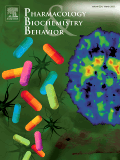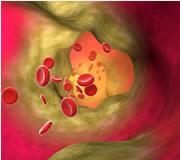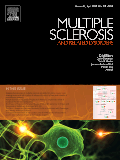Everyone carries out daily habits and routines. As David Lovinger, Ph.D., chief of the Laboratory for Integrative Neuroscience at the National Institute on Alcohol Abuse and Alcoholism (NIAAA), explained, “If your brain does not habitualize familiar tasks or places, it would be very difficult to focus because you’re constantly processing all these sensory inputs.”
Nonetheless, it’s important that the brain can shift from habit mode to a more active, goal-directed mindset. While an occasional lapse is normal, a chronic inability to exit from habitual behavior is a critical element of both addiction and obsessive-compulsive disorders. A new study carried out by Lovinger and colleagues adds to the understanding of the brain circuits responsible for the habitual/goal-directed shift.
The results, published June 15 in Neuron, also point to a receptor called cannabinoid type 1 (CB1) as a key regulator of this circuitry.
The findings were made possible using a training strategy that enabled mice to push levers for food in both a habitual and goal-directed manner. The mice were placed in enclosures with differing visual decorations; the lever in the first dropped a food reward after it was pressed a certain number of times, while the lever in the second would drop a reward at a random time after the lever had been pressed once.
“In the first scenario, the mouse makes the connection quickly that pressing the lever 20 times, for example, gets it a reward,” Lovinger told Psychiatric News. “In the second enclosure, that contiguity is disrupted. The mouse knows that pressing will eventually lead to reward, but it doesn’t know how many, so it will just start pressing at a periodic rate.”
On alternate testing days, the mice were allowed to eat their treats prior to the testing, and on these days—termed the devalued state because the desire for the reward is lessened—mice pressed the lever far less in the goal-directed enclosure, but still roughly the same amount in the random-time enclosure—much like a habit.
The researchers then tried these tests out on mice in which the neurons that travel between the orbitofrontal cortex (OFC) and dorsal striatum (DS, which links decision making and reward behaviors) were blocked and observed that the mice kept pressing a lot in both enclosures, suggesting an inability to switch out of habit mode.
“Normally, on devalued days the urge to default to the habit of pressing the lever repeatedly gets suppressed in some way because the brain is providing information that the food isn’t as valuable,” Lovinger said.
With the OFC-DS connection identified, the next question was what part of these neurons was responsible for suppressing habits? Some previous work by Lovinger’s colleague and study coauthor Rui Costa, Ph.D., an investigator at the Champalimaud Institute for the Unknown in Lisbon, Portugal, pointed to CB1 as a potential candidate; the CB1 receptor interacts with endocannabinoids, natural messenger molecules in the body that are strikingly similar to THC, the active compound in marijuana.
When mice lacking the CB1 receptor in their OFC neurons were trained, they reduced their lever pressing in both enclosures on devalued days, reflective of a state in which the mice always used goal-directed behaviors because they could not form habits.
Having found CB1 as the receptor that Helps suppress habits, Lovinger said the next step would be to find the agent in the OFC-DS neural circuit that strengthens habits—and that should provide major clues about how drugs of abuse like alcohol and marijuana disrupt the normal process of habituation.
While the NIAAA is more focused on the addiction side, Lovinger thinks the current knowledge gained on weakened habits could be valuable in neuropsychiatry as well.
“It may be a bit of a stretch, but ADHD could be mediated in part by reduced habit-forming potential,” he said. “If someone is trying to pay attention to all potential outcomes in every decision, it could explain the lack of focus displayed by people with ADHD.””
http://psychnews.psychiatryonline.org/doi/full/10.1176/appi.pn.2016.7b25










